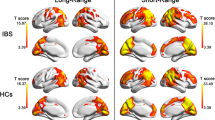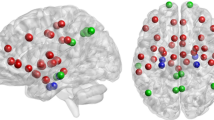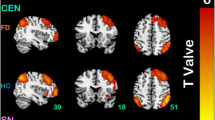Abstract
Functional dyspepsia (FD) is a complex condition identified by chronic indigestion without an obvious organic cause, characterized by diverse abdominal symptoms. Recent studies employing resting-state functional magnetic resonance imaging (rs-fMRI) have investigated gut-brain interactions in FD. These studies report altered functional connectivity patterns that are associated with the severity of the disease. The investigation of resting-state functional connectivity patterns involves defining connectivity nodes for subsequent graph-theory analyses, thus emphasizing the importance of brain parcellation. While traditional methods employ predefined brain atlases, fMRI-driven parcellation offers a more specific approach able to extract functionally homogeneous regions. In this study, we applied the Topological Data Analysis (TDA) tool of Mapper algorithm to rs-fMRI data to develop a whole-brain TDA-driven fMRI parcellation pipeline. This functional parcellation, applied in a group of healthy controls (HC), provides a reference for comparing network properties between HC and FD groups. We propose that the TDA Mapper is able to recover structure in rs-fMRI data, showing that topological complexes embedded in fMRI data could be identified and explored using this tool. Based on the brain network thus derived, we highlight the potential of applying graph analysis on rs-fMRI data to assess topological properties of brain connectivity, showing significant differences between groups in the functional parcel located in the frontal pole for nodal strength and degree.
Access this chapter
Tax calculation will be finalised at checkout
Purchases are for personal use only
Similar content being viewed by others
References
Tack, J., et al.: Functional gastroduodenal disorders. Gastroenterology 130(5), 1466–1479 (2006). https://linkinghub.elsevier.com/retrieve/pii/S0016508506005087
Craddock, R.C., James, G., Holtzheimer, P.E., Hu, X.P., Mayberg, H.S.: A whole brain fMRI atlas generated via spatially constrained spectral clustering. Hum. Brain Mapp. 33(8), 1914–1928 (2012). https://onlinelibrary.wiley.com/doi/10.1002/hbm.21333
Beckmann, M., Johansen-Berg, H., Rushworth, M.F.S.: Connectivity-based parcellation of human cingulate cortex and its relation to functional specialization. J. Neurosci. 29(4), 1175–1190 (2009). https://www.jneurosci.org/lookup/doi/10.1523/JNEUROSCI.3328-08.2009
Shen, X., Papademetris, X., Constable, R.: Graph-theory based parcellation of functional subunits in the brain from resting-state fMRI data. NeuroImage 50(3), 1027–1035 (2010). https://linkinghub.elsevier.com/retrieve/pii/S105381190901427X
Iraji, A., et al.: The connectivity domain: analyzing resting state fMRI data using feature-based data-driven and model-based methods. NeuroImage 134, 494–507 (2016). https://linkinghub.elsevier.com/retrieve/pii/S1053811916300398
Ryali, S., Chen, T., Supekar, K., Menon, V.: A parcellation scheme based on von Mises-Fisher distributions and Markov random fields for segmenting brain regions using resting-state fMRI. NeuroImage 65, 83–96 (2013). https://linkinghub.elsevier.com/retrieve/pii/S1053811912009858
Ellis, C.T., Lesnick, M., Henselman-Petrusek, G., Keller, B., Cohen, J.D.: Feasibility of topological data analysis for event-related fMRI. Netw. Neurosci. 3(3), 695–706 (2019). https://direct.mit.edu/netn/article/3/3/695-706/2174
Salch, A., Regalski, A., Abdallah, H., Suryadevara, R., Catanzaro, M.J., Diwadkar, V.A.: From mathematics to medicine: a practical primer on topological data analysis (TDA) and the development of related analytic tools for the functional discovery of latent structure in fMRI data. PLOS ONE 16(8), e0255859 (2021). https://dx.plos.org/10.1371/journal.pone.0255859
Singh, G., Memoli, F., Carlsson, G.: Topological methods for the analysis of high dimensional data sets and 3D object recognition (2007). Artwork Size: 10 pages ISBN: 9783905673517 ISSN: 1811-7813 Pages: 10 pages Publication Title: Eurographics Symposium on Point-Based Graphics. http://diglib.eg.org/handle/10.2312/SPBG.SPBG07.091-100
Saggar, M., et al.: Towards a new approach to reveal dynamical organization of the brain using topological data analysis. Nat. Commun. 9(1), 1399 (2018). https://www.nature.com/articles/s41467-018-03664-4
Rubinov, M., Sporns, O.: Complex network measures of brain connectivity: uses and interpretations. NeuroImage 52(3), 1059–1069 (2010). https://linkinghub.elsevier.com/retrieve/pii/S105381190901074X
Sclocco, R., et al.: Cine gastric MRI reveals altered Gut-Brain Axis in Functional Dyspepsia: gastric motility is linked with brainstem-cortical fMRI connectivity. Neurogastroenterol. Motil. 34(10), e14396 (2022). https://onlinelibrary.wiley.com/doi/10.1111/nmo.14396
Van Veen, H., Saul, N., Eargle, D., Mangham, S.: Kepler mapper: a flexible Python implementation of the Mapper algorithm. J. Open Source Softw. 4(42), 1315 (2019). https://joss.theoj.org/papers/10.21105/joss.01315
Hagberg, A., Swart, P.J., Schult, D.A.: Exploring network structure, dynamics, and function using NetworkX, United States, pp. 11–15, January 2008. http://conference.scipy.org/proceedings/SciPy2008/paper_2/
Fortunato, S.: Community detection in graphs. Phys. Rep. 486(3-5), 75–174 (2010). https://linkinghub.elsevier.com/retrieve/pii/S0370157309002841
Desikan, R.S., et al.: An automated labeling system for subdividing the human cerebral cortex on MRI scans into gyral based regions of interest. NeuroImage 31(3), 968–980 (2006). https://linkinghub.elsevier.com/retrieve/pii/S1053811906000437
Zalesky, A., et al.: Whole-brain anatomical networks: does the choice of nodes matter? NeuroImage 50(3), 970–983 (2010). https://linkinghub.elsevier.com/retrieve/pii/S1053811909013159
Cordasco, G., Gargano, L.: Community detection via semi-synchronous label propagation algorithms. publisher: arXiv Version Number: 1 (2011). https://arxiv.org/abs/1103.4550
Zang, Y., Jiang, T., Lu, Y., He, Y., Tian, L.: Regional homogeneity approach to fMRI data analysis. NeuroImage 22(1), 394–400 (2004). https://linkinghub.elsevier.com/retrieve/pii/S1053811904000035
Rousseeuw, P.J.: Silhouettes: a graphical aid to the interpretation and validation of cluster analysis. J. Comput. Appl. Math. 20, 53–65 (1987). https://linkinghub.elsevier.com/retrieve/pii/0377042787901257
Miri Ashtiani, S.N., et al.: Altered topological properties of brain networks in the early MS patients revealed by cognitive task-related fMRI and graph theory. Biomed. Sig. Process. Control 40, 385–395 (2018). https://linkinghub.elsevier.com/retrieve/pii/S1746809417302471
Acknowledgments
The present work was supported by the following organizations: US National Institutes of Health (NIH), National Institute of Diabetes and Digestive and Kidney Diseases (U01-DK112193, R01-DK133520, R01-DK136243); NIH National Center for Complementary and Integrative Health (P01-AT009965, R21-AT011918, K01-AT012208); Osher Center for Integrative Medicine (Pilot Research Grant). EM was partly supported by the Italian Ministry of Health (grant n. GR-2019-12370616) and by the Italian Ministry of University and Research (PRIN 2022 PNRR, grant n. P20229MFRC).
Author information
Authors and Affiliations
Corresponding author
Editor information
Editors and Affiliations
Rights and permissions
Copyright information
© 2025 The Author(s), under exclusive license to Springer Nature Switzerland AG
About this paper
Cite this paper
Tassi, E. et al. (2025). Topological Data Analysis of Resting-State fMRI Suggests Altered Brain Network Topology in Functional Dyspepsia: A Mapper-Based Parcellation Approach. In: Chen, C., Singh, Y., Hu, X. (eds) Topology- and Graph-Informed Imaging Informatics. TGI3 2024. Lecture Notes in Computer Science, vol 15239. Springer, Cham. https://doi.org/10.1007/978-3-031-73967-5_9
Download citation
DOI: https://doi.org/10.1007/978-3-031-73967-5_9
Published:
Publisher Name: Springer, Cham
Print ISBN: 978-3-031-73966-8
Online ISBN: 978-3-031-73967-5
eBook Packages: Computer ScienceComputer Science (R0)





